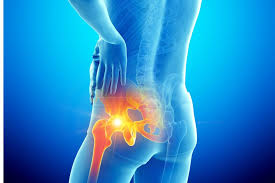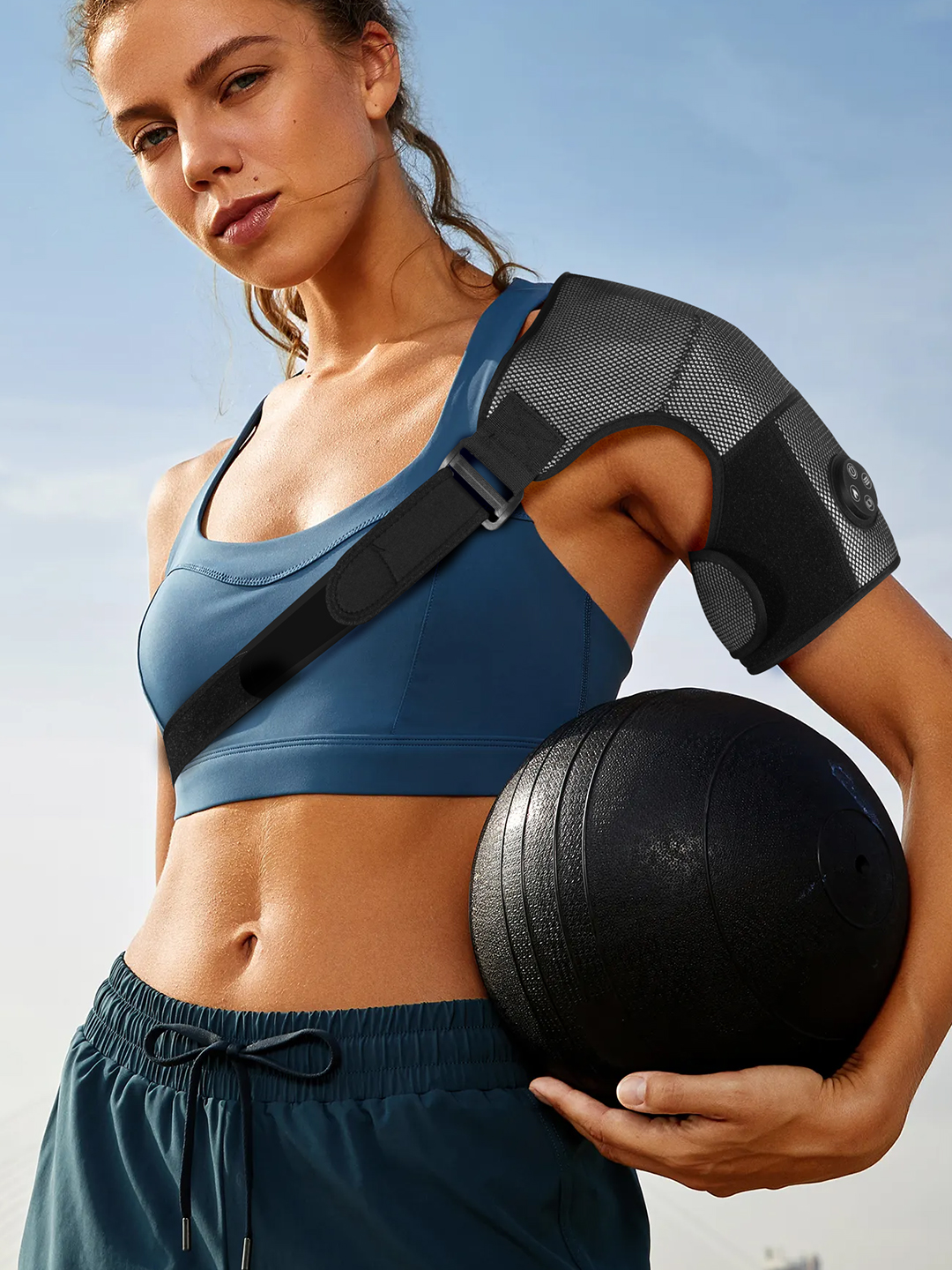Do Hip Massagers Really Work for Pain and Stiffness?
- By Grace
- Updated on
Hip pain and stiffness are unfortunately common companions for many, especially as we navigate our middle and later years. If you're reading this, you've likely wondered: is a hip massager just another gadget gathering dust, or could it genuinely offer relief? The landscape of these devices has evolved, with modern massagers now offering a combination of therapies beyond simple vibration.
A modern hip massager is often a multi-functional device designed to combine therapies like air compression (squeezing), vibration, heat, and even red light therapy to target the muscles and tissues around the hip joint. The aim is to ease tension, improve circulation, and reduce discomfort, particularly in areas like the tight hip flexors or the deep psoas muscle. This article will delve into the effectiveness of these advanced devices, exploring what they can realistically do for you and whether they might be a worthwhile addition to your wellness toolkit.
Understanding Hip Pain: What's Really Causing Your Discomfort?
Before we talk about solutions, it’s helpful to understand a little about why your hips might be feeling less than their best. For many middle-aged and elderly individuals, hip discomfort isn't just one single thing. It can stem from a variety of sources, often related to the natural wear and tear of life, changes in activity levels, or prolonged periods of sitting which can lead to very tight hip flexors. While serious conditions always need a doctor's diagnosis, much of the day-to-day achiness can be linked to muscle tightness, particularly in the complex network of muscles surrounding the hip joint.
Muscles like the psoas (a deep hip flexor that connects your spine to your leg), glutes, and piriformis play crucial roles in hip movement and stability. When these muscles become overly tight, weak, or develop trigger points, they can cause localized pain, restrict your range of motion, and sometimes even refer pain to other areas. It's this type of muscular discomfort where a multi-functional hip massager might potentially step in to offer some support.
- Prolonged sitting leading to shortened and tight hip flexors.
- Muscle imbalances from postural habits or repetitive movements.
- General deconditioning or sudden unaccustomed activity.
- Compensatory patterns from pain or stiffness elsewhere in the body (e.g., knee or back).

How Can a Multi-Functional Hip Massager Aid Relief?
The core idea behind a modern hip massager is to layer different therapeutic actions to enhance the overall effect. It's not just about one mechanism; it's about how they work together.
- Air Compression (Squeezing): This function rhythmically inflates and deflates air chambers within the massager. This creates a squeezing sensation that can help increase blood flow, reduce swelling, and provide a gentle, broad pressure that encourages muscle relaxation across a large area.
- Heat Therapy: The application of gentle warmth is a well-known method for relaxing stiff muscles. Heat can increase circulation, making tissues more pliable and receptive to massage and stretching. This can be especially soothing for chronic tightness in the hip flexors.
- Vibration Massage: High-frequency vibrations can penetrate tissues to help relax muscles and "distract" the nervous system from sending pain signals—a concept known as pain gating. This can provide temporary relief from soreness.
- Red Light Therapy: An emerging feature in some wellness devices, red light therapy involves exposure to low-level wavelengths of light. Proponents suggest it may help reduce inflammation and support cellular energy production, potentially aiding in tissue recovery, though research in this specific application is ongoing.
When combined, these functions can create a comprehensive therapeutic experience. For example, heat can relax the muscle, making it more responsive to the benefits of compression and vibration, providing a more effective session than any single function might on its own.
Hip Massagers: Miracle Tool or Marketing Hype? Exploring User Experiences.
This is where the conversation gets really interesting, as experiences with hip massagers can vary. Many individuals, especially those with muscular-based pain, report positive outcomes. They find that multi-functional devices offering a combination of heat and compression provide a more soothing and comprehensive relief than a simple massage gun or foam roller. The convenience of an all-in-one, at-home solution is a major plus.
On the other hand, there are skeptics. Some argue that simpler tools, like a firm lacrosse ball for a deep psoas massage or a basic heating pad, can achieve similar—if separate—results for a fraction of the cost. The argument here is whether the convenience and combined-therapy benefits of an advanced electronic hip massager justify the investment.
Then there's the crucial factor of individual differences—this is a really, really important point. The effectiveness can depend on the specific cause of your hip pain, the quality of the massager, and your body's unique response. A device with adjustable intensity for heat, compression, and vibration allows for personalization that can make a significant difference. What feels like a miracle to one person might offer minimal relief to another. There's rarely a one-size-fits-all answer in wellness.
What Are Your Options? From Multi-Functional Devices to DIY Tools.
If you're considering some form of hip massage, it's good to know the landscape. The market has expanded beyond basic tools to include sophisticated, multi-functional devices.
- Multi-Functional Hip Wraps: These are the most advanced option, often incorporating several therapies into one wearable device. For instance, a KLCOSY multi-functional hip massager might offer adjustable and combinable functions of squeezing, vibration, red light, and heat. A key advantage is their versatility; many are designed to be used not just on the hips, but also on other large joints like the shoulders and knees, making them a more holistic wellness tool.
- Electric Percussive Massagers: Massage guns offer rapid, targeted pulses. They are excellent for breaking up specific knots but can be intense and lack the soothing, broad effects of heat or compression.
- Simple Massage Balls and Rollers: A lacrosse ball or foam roller remains a cost-effective and powerful tool for deep, focused pressure on trigger points in the glutes or for a self-administered psoas massage.
- Heat and Compression-Only Wraps: These offer some of the benefits of the multi-functional devices but without the added massage component.
The choice often comes down to budget, the type of relief you're seeking (targeted and intense vs. broad and soothing), and whether you value the convenience and synergistic effects of a device that combines multiple therapies.

How Can You Use a Hip Massager for Optimal Results and Safety?
If you decide to try a hip massager, how you use it matters a great deal. My first piece of advice is always to start gently. With a multi-functional device, begin with the lowest settings for heat, compression, and vibration. You can always gradually increase the intensity as your body adapts. Remember, the goal is relief and relaxation, not to endure pain. If something feels sharply painful, ease off or stop.
Listen to your body – it’s your best guide. Avoid placing massagers directly over bony prominences like the pointy part of your hip bone. Focus on the fleshy, muscular parts. For many, consistency is key; a regular 15-minute session might be more helpful for managing chronic tightness than a very long, infrequent one. And, if you have persistent or severe pain, or if your pain worsens with massage, always check in with your doctor or a physical therapist to rule out any underlying conditions that require specific medical attention.
- Read Instructions: Familiarize yourself with your device's specific guidelines and features.
- Start Slow: Begin with shorter durations and lower intensity settings.
- Breathe: Try to relax and breathe deeply during the session to help your muscles let go.
- Avoid Bony Areas: Focus on muscle tissue.
- Don't Push Through Sharp Pain: Discomfort is different from pain that signals a problem.
- Stay Hydrated: Good hydration is always important for muscle health.
- Consider Complementary Practices: Gentle stretching after a warm-up massage session can be highly effective.
So, to circle back to our original question: are modern hip massagers effective? The answer is more nuanced than a simple yes or no. For many dealing with muscular tightness and discomfort, a multi-functional hip massager that combines heat, compression, and vibration can be a valuable and convenient tool for providing temporary relief and improving the feeling of mobility.
They are not a cure-all, and their effectiveness is highly individual. The debate about whether a sophisticated device is superior to simpler tools often comes down to personal preference, budget, and the value placed on the convenience and synergistic effects of combined therapies. If you're considering investing in a multi-functional hip massager, especially a versatile one that can also be used on other joints, it’s wise to manage expectations, understand what you hope to achieve, and listen closely to your own body's response.
Frequently Asked Questions (FAQ)
Can massage help hip pain?
Yes, massage can often help with certain types of hip pain, especially if the pain is related to muscle tightness, tension, or overuse. By relaxing tense muscles and improving circulation, massage may alleviate discomfort. Devices that combine massage with heat therapy can be particularly effective in relaxing muscles like the deep psoas. However, if hip pain is severe or caused by structural issues like arthritis or a labral tear, it's essential to consult a healthcare professional.
How to give a hip massage?
Using a modern Hip massager wrap simplifies this process:
- Warm-up (optional but recommended): Many devices have a built-in heat function; start with this for a few minutes.
- Positioning: Secure the wrap around your hip, shoulder, or knee according to the instructions, ensuring a snug but comfortable fit.
- Application: Turn on the device, starting with low settings for compression and vibration. Find a combination of functions that feels comfortable and therapeutic.
- Duration: A typical session might last 15-20 minutes. Follow the manufacturer's recommendations and don't overdo it.
- Breathing: Breathe deeply throughout the massage to enhance relaxation.
For self-massage with a ball, lie on it and use your body weight to apply pressure to muscular areas, avoiding bone. Hold on tender spots for 20-30 seconds.
Does massage help hip bursitis?
This must be approached carefully. Hip bursitis is the inflammation of a bursa sac. Direct, deep massage or aggressive vibration on the inflamed bursa can make it worse. However, therapies applied to the surrounding muscles can be beneficial by reducing overall tension. Using a multi-functional massager with gentle heat and light compression around the area (not directly on the point of most pain) might help soothe the muscles. Aggressive massage should be avoided. Always consult a doctor or physical therapist if bursitis is diagnosed, as they can provide guidance on what therapies are safe and appropriate for your specific condition.
This reply is generated based on currently verifiable public information. It is recommended to cross-check key content with authoritative sources. The information provided in this article is for general informational purposes only and does not constitute medical advice. Always seek the advice of your physician or other qualified health provider with any questions you may have regarding a medical condition.




